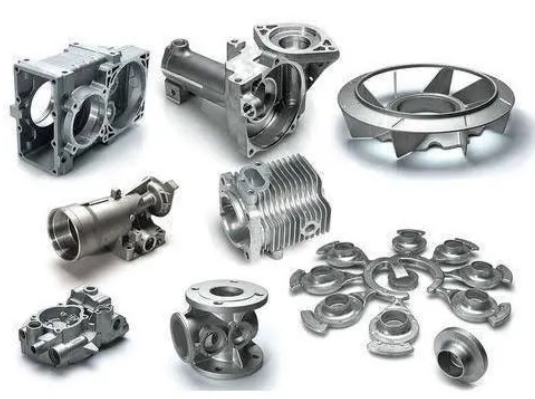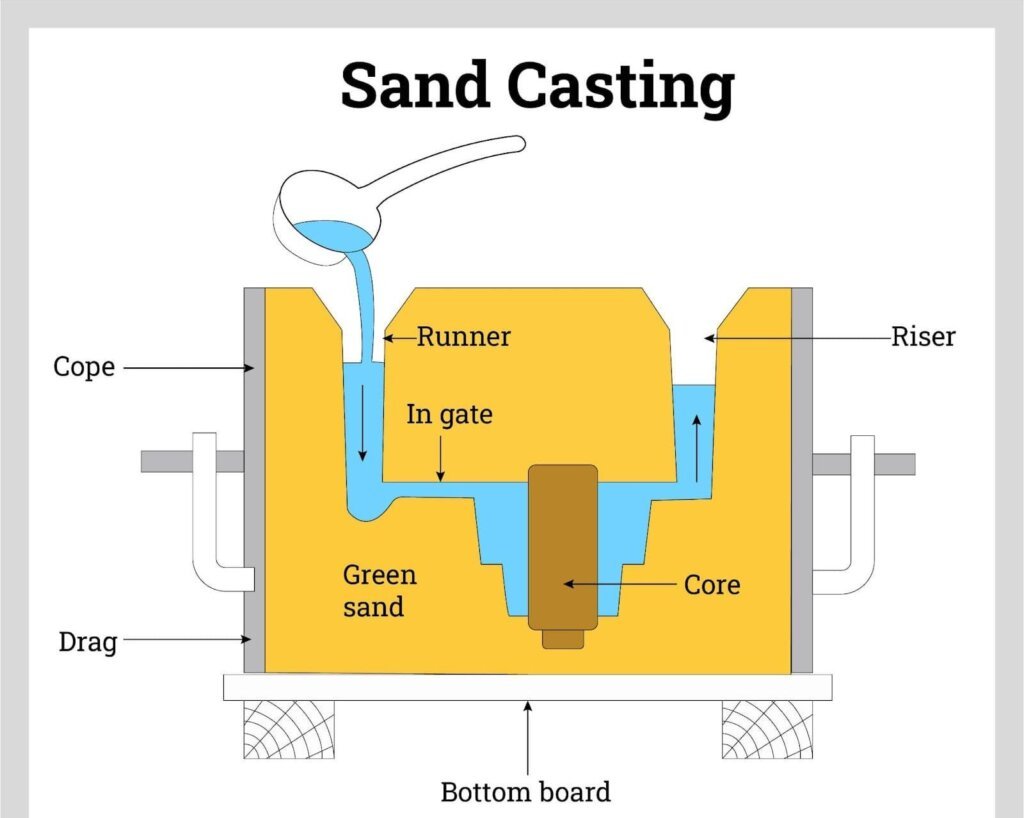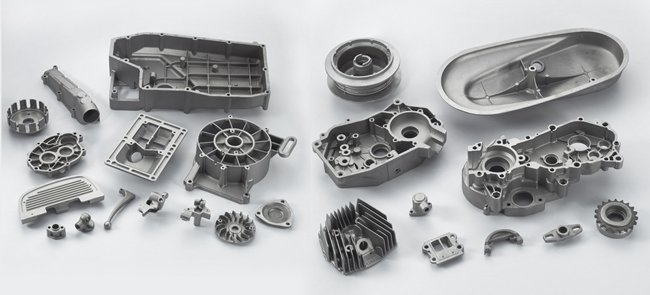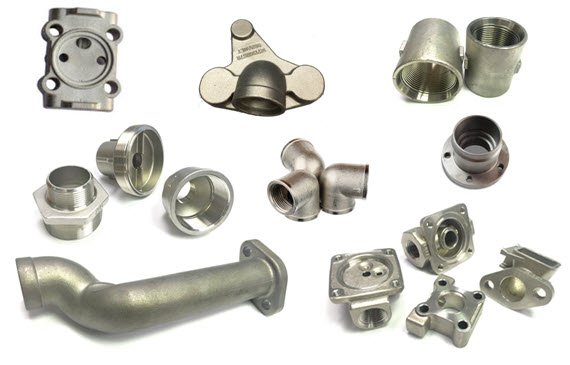Casting is one of the oldest and most versatile manufacturing processes, used to create complex metal parts with precision and efficiency. From automotive engines to aerospace components, casting parts play a critical role in modern manufacturing. This article delves into the fundamentals of casting, its types, applications, and future trends, providing a comprehensive overview of this essential process. To enhance understanding, we’ll also include structural diagrams and detailed images to illustrate key concepts.
What is Casting?
Casting is a manufacturing process where molten material (typically metal) is poured into a mold, which contains a hollow cavity of the desired shape. Once the material solidifies, the mold is removed, leaving behind a finished part. This process is ideal for producing complex geometries that would be difficult or expensive to achieve through other methods.
Why Casting Parts Matter
- Complex Shapes: Casting can produce intricate designs with internal cavities and fine details.
- Cost-Effective: It is often more economical for large-scale production compared to machining.
- Material Versatility: Casting works with a wide range of metals, including aluminum, iron, steel, and titanium.
Types of Casting Processes
There are several casting methods, each suited to specific applications and materials. Below are the most common types:
1. Sand Casting
Sand casting is one of the most widely used casting methods. It involves creating a mold from compacted sand and pouring molten metal into the cavity. Once the metal solidifies, the sand mold is broken away to reveal the part.
- Applications: Engine blocks, pump housings, and large industrial components.
- Advantages: Low cost, suitable for large parts, and versatile material options.
- Diagram: [Insert Sand Casting Diagram Here]
2. Investment Casting (Lost-Wax Casting)
Investment casting uses a wax pattern coated with ceramic material to create the mold. The wax is melted away, leaving a cavity for the molten metal.
- Applications: Aerospace components, turbine blades, and jewelry.
- Advantages: High precision, excellent surface finish, and ability to produce complex shapes.
- Image: [Insert Investment Casting Image Here]
3. Die Casting
Die casting involves forcing molten metal into a reusable steel mold (die) under high pressure. This method is ideal for high-volume production.
- Applications: Automotive parts, electronic housings, and consumer goods.
- Advantages: High production speed, excellent dimensional accuracy, and smooth surface finish.
- Diagram: [Insert Die Casting Diagram Here]
4. Centrifugal Casting
In centrifugal casting, molten metal is poured into a rotating mold. The centrifugal force distributes the metal evenly, creating parts with high density and strength.
- Applications: Pipes, cylinders, and rings.
- Advantages: Uniform material distribution, reduced defects, and high strength.
- Image: [Insert Centrifugal Casting Image Here]
Materials Used in Casting
The choice of material depends on the application and desired properties. Common casting materials include:
1. Aluminum
- Properties: Lightweight, corrosion-resistant, and excellent thermal conductivity.
- Applications: Automotive parts, aerospace components, and consumer electronics.
2. Iron
- Properties: High strength, wear resistance, and good machinability.
- Applications: Engine blocks, pipes, and heavy machinery.
3. Steel
- Properties: High strength, toughness, and durability.
- Applications: Industrial machinery, construction equipment, and tools.
4. Titanium
- Properties: High strength-to-weight ratio, corrosion resistance, and biocompatibility.
- Applications: Aerospace components, medical implants, and marine equipment.
Quality Control in Casting
Ensuring the quality of casting parts is critical for their performance and reliability. Common quality control measures include:
1. Non-Destructive Testing (NDT)
- Methods: Ultrasonic testing, X-ray inspection, and magnetic particle inspection.
- Purpose: Detect internal defects like cracks, voids, and inclusions without damaging the part.
2. Dimensional Inspection
- Tools: Coordinate Measuring Machines (CMMs), laser scanners, and optical profilometers.
- Purpose: Verify that the part meets specified tolerances and dimensions.
3. Surface Finish Analysis
- Tools: Surface roughness testers and profilometers.
- Purpose: Ensure the surface finish meets design requirements.
Applications of Casting Parts
Casting parts are used in a wide range of industries, including:
1. Automotive
- Examples: Engine blocks, transmission cases, and suspension components.
- Case Study: A leading automotive manufacturer reduced production costs by 15% using sand casting for engine blocks.
2. Aerospace
- Examples: Turbine blades, structural components, and landing gear parts.
- Case Study: An aerospace company improved component strength by 20% using investment casting for turbine blades.
3. Construction
- Examples: Pipes, valves, and structural supports.
- Case Study: A construction firm increased the durability of pipes by 30% using centrifugal casting.
4. Medical
- Examples: Implants, surgical instruments, and prosthetics.
- Case Study: A medical device manufacturer enhanced biocompatibility by using titanium casting for implants.
Future Trends in Casting
The casting industry is evolving with advancements in technology and materials. Key trends include:
1. Additive Manufacturing Integration
- Description: Combining 3D printing with traditional casting to create complex molds and patterns.
- Benefits: Reduced lead times, lower costs, and greater design flexibility.
2. Smart Casting
- Description: Using IoT and AI to monitor and optimize the casting process in real-time.
- Benefits: Improved quality, reduced waste, and enhanced efficiency.
3. Sustainable Casting
- Description: Adopting eco-friendly practices like using recycled materials and reducing energy consumption.
- Benefits: Lower environmental impact and compliance with regulations.
Conclusion
Casting parts are the backbone of modern manufacturing, enabling the production of complex, high-quality components across various industries. From automotive to aerospace, the versatility and efficiency of casting make it an indispensable process. As technology advances, the future of casting looks even brighter, with innovations like additive manufacturing and smart casting paving the way for greater efficiency and sustainability.
If you’re involved in manufacturing, understanding the casting process and its applications can help you make informed decisions and stay ahead of the competition. With its ability to produce intricate designs and high-performance parts, casting will continue to play a vital role in the industry for years to come.
References
- Foundry Management & Technology (2021) – Report on advancements in sand casting.
- Aerospace Manufacturing and Design (2022) – Case study on investment casting in aerospace.
- Modern Casting (2021) – Article on the benefits of die casting for automotive parts.
- Manufacturing Global (2020) – Analysis of centrifugal casting in construction.
- Medical Design & Outsourcing (2023) – Case study on titanium casting for medical implants.








